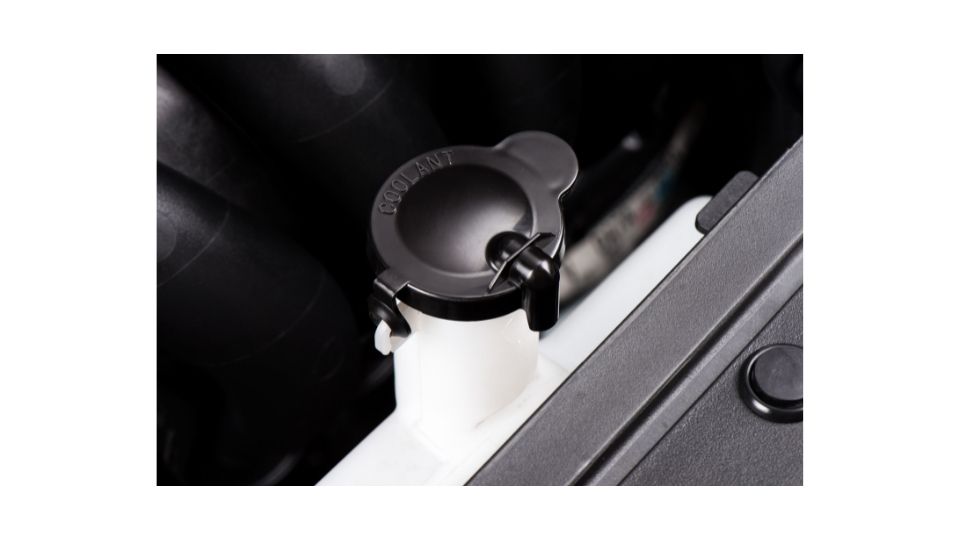Visible bubbling or boiling of a coolant in the reservoir is one of the most common problems in automotive cooling systems.
The reason is that it usually indicates that the system has an underlying issue with the cooling system and/or the engine, and there are many potential causes for overheating in this article we are going to look at the most common things that cause coolant to boil in the water bottle.
Is it Normal for Coolant Boil in the Reservoir?
When the car is running, coolant shouldn’t be boiling in the reservoir. As the car ages, you will start to notice small bubbles in the reservoir, which is totally normal but should be fixed before it does any damage.
If you see boiling in the reservoir, it’s time to bring your car in for a check-up. It could be an overheating issue, but it also could be something as simple as a dirty radiator or fan, or even a small hole in one of the hoses. Getting this checked out early can help reduce damage to your car down the road.
Coolant Boiling in the Reservoir Causes
Blown Head Gasket
This is one of the most common reasons for a coolant overflow condition. When a head gasket fails, it causes compression leaks. Pressure builds in the cooling system and pushes coolant out of the radiator and into the overflow tank.
The most common way coolant ends up boiling is when you have a blown head gasket. (You can read more about blown head gaskets here.) When a car overheats, the liquid coolant in the reservoir gets hot enough to boil. Boiling liquid expands, so the excess boils over into the engine and causes significant damage, including cracked cylinders and warped cylinder heads.
If you notice any steam coming from under your hood or if your coolant light is on and your engine is running too hot, check your coolant reservoir immediately. If you don’t see any signs of leakage on the outside of the reservoir and the temperature gauge is not in the red zone, go ahead and drive it straight to a mechanic—it might be nothing, but it could also be the beginning of major problems.
Coolant Reservoir Leak
If your coolant reservoir is leaking, it will allow pressure to build in the cooling system. The pressure will push coolant into the overflow tank and then out of it through the fill cap on top of the tank.
If your coolant reservoir is leaking, it will allow air to build in the cooling system causing bubbles and boiling. The pressure will push coolant into the overflow tank and then out of it through the fill cap on top of the tank.
Damaged Radiator
When your radiator is damaged, it cannot properly cool down the engine. This causes excess heat to build up in the engine and will boil the coolant in the coolant reservoir. If this happens, you should check your radiator for any leaks or damage and make sure that it isn’t clogged with debris. If you see no damage to it, then it may need to be flushed and refilled with antifreeze.
Leaking Water Pump/Thermostat
The water pump pushes the coolant from the radiator into the engine and back again. If this is damaged or leaking, then there won’t be enough coolant circulating through your system to keep things cool and thus, cause the temperatures to rise. A damaged thermostat will also cause similar issues since it monitors when to open and close so that coolant can enter or leave the engine as needed.
Low Coolant Levels
This can be caused by leaking, burning off, or evaporation. Check your reservoir to make sure it’s full. If not, fill it up and see if the problem is fixed. If your car leaks coolant and you top it up regularly, then you have a leak somewhere in the system.
What to Do If Coolant is Boiling in the Reservoir?
What to do if coolant is boiling? The first thing you need to do is stop the car and let it cool down. Once it has cooled down, open the hood and check to see where the problem is coming from. If you find that the coolant is boiling, then there is either a leak in the system or an issue with your radiator cap.
If it’s simply a leak, you can use some stop-leak products to seal the leak (make sure to follow the instructions on the bottle). However, if the problem persists, you will need to take your car into a mechanic for further repairs.

Robert Anderson is a world class motorhead who rebuilt his first carb at age 10, his first engine at age 15, and completed his first full hotrod build when he was just 18! Previously, he has ran a part warehouse, delivered pizzas, and managed the service department for a $20 million/year revenue dealership. Robert knows cars like few others and he is passionate about sharing his knowledge.

